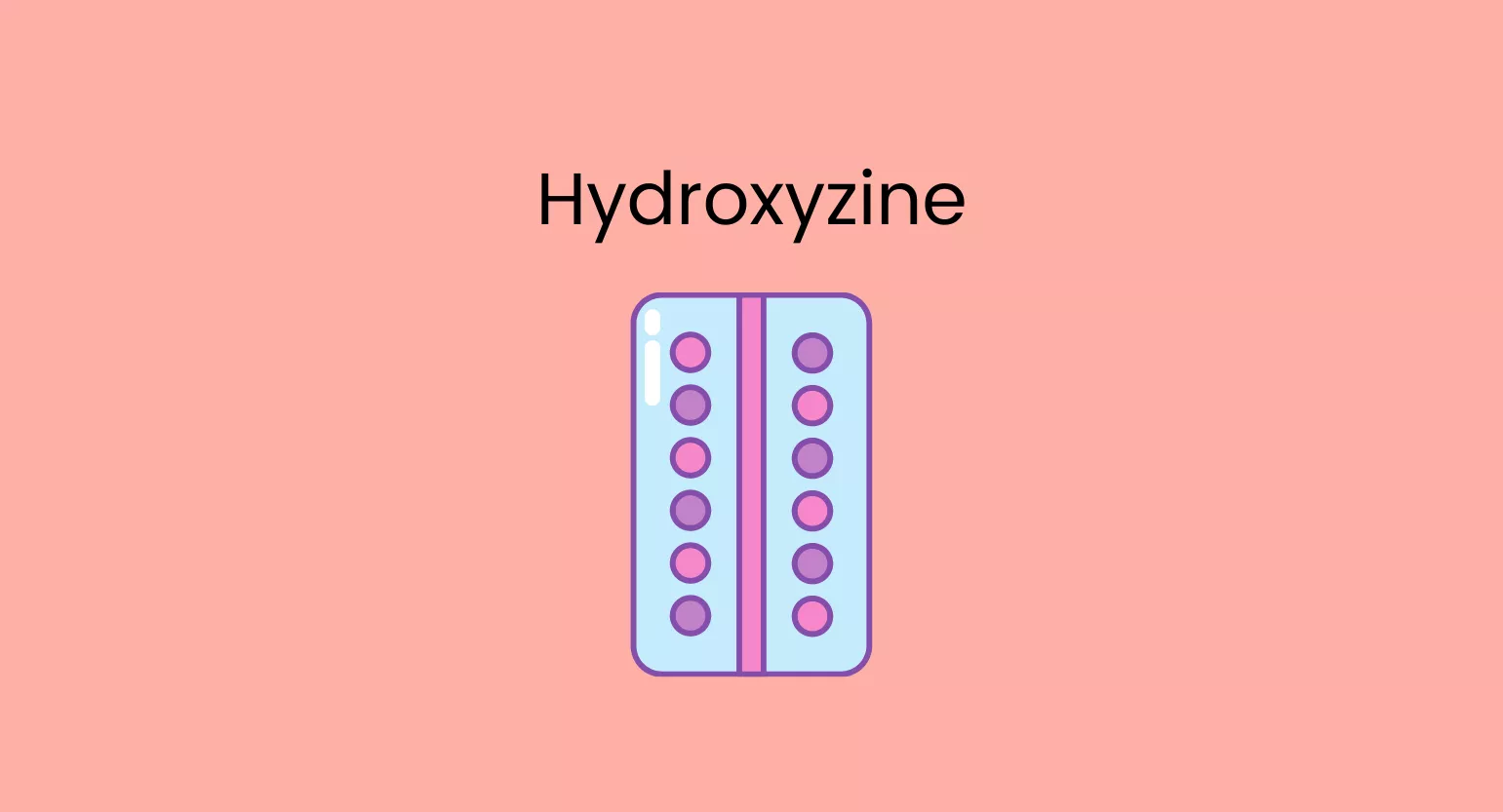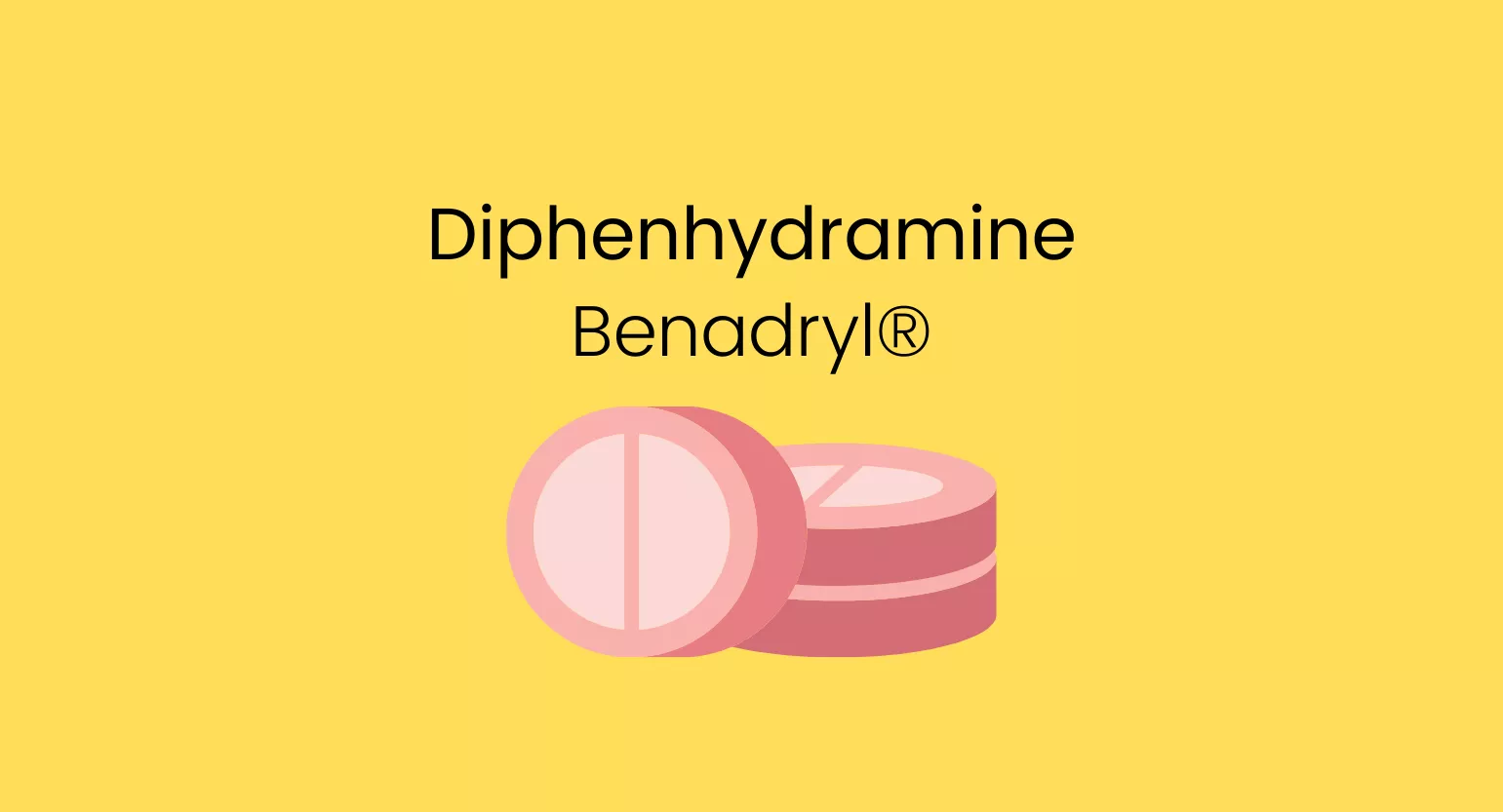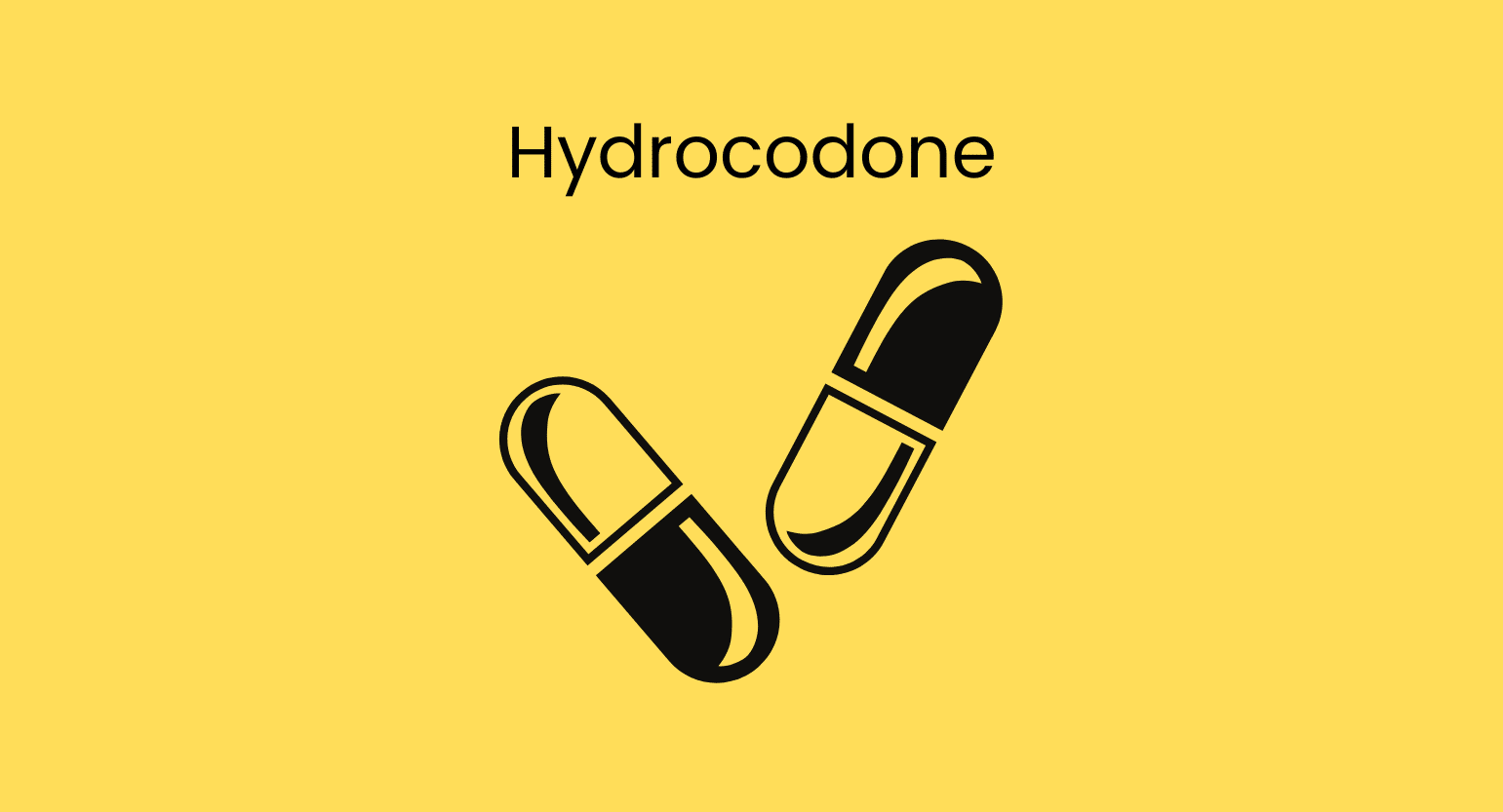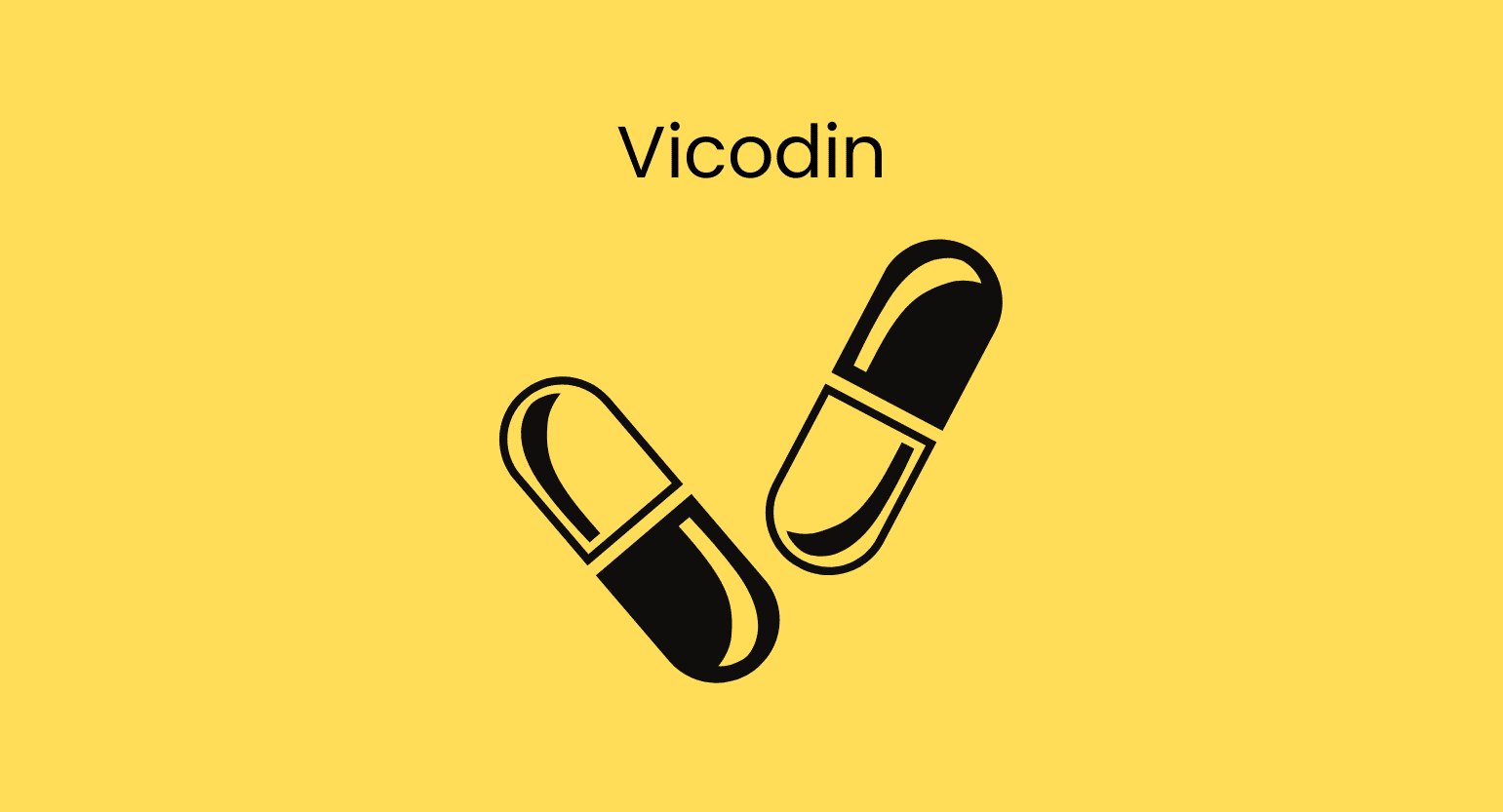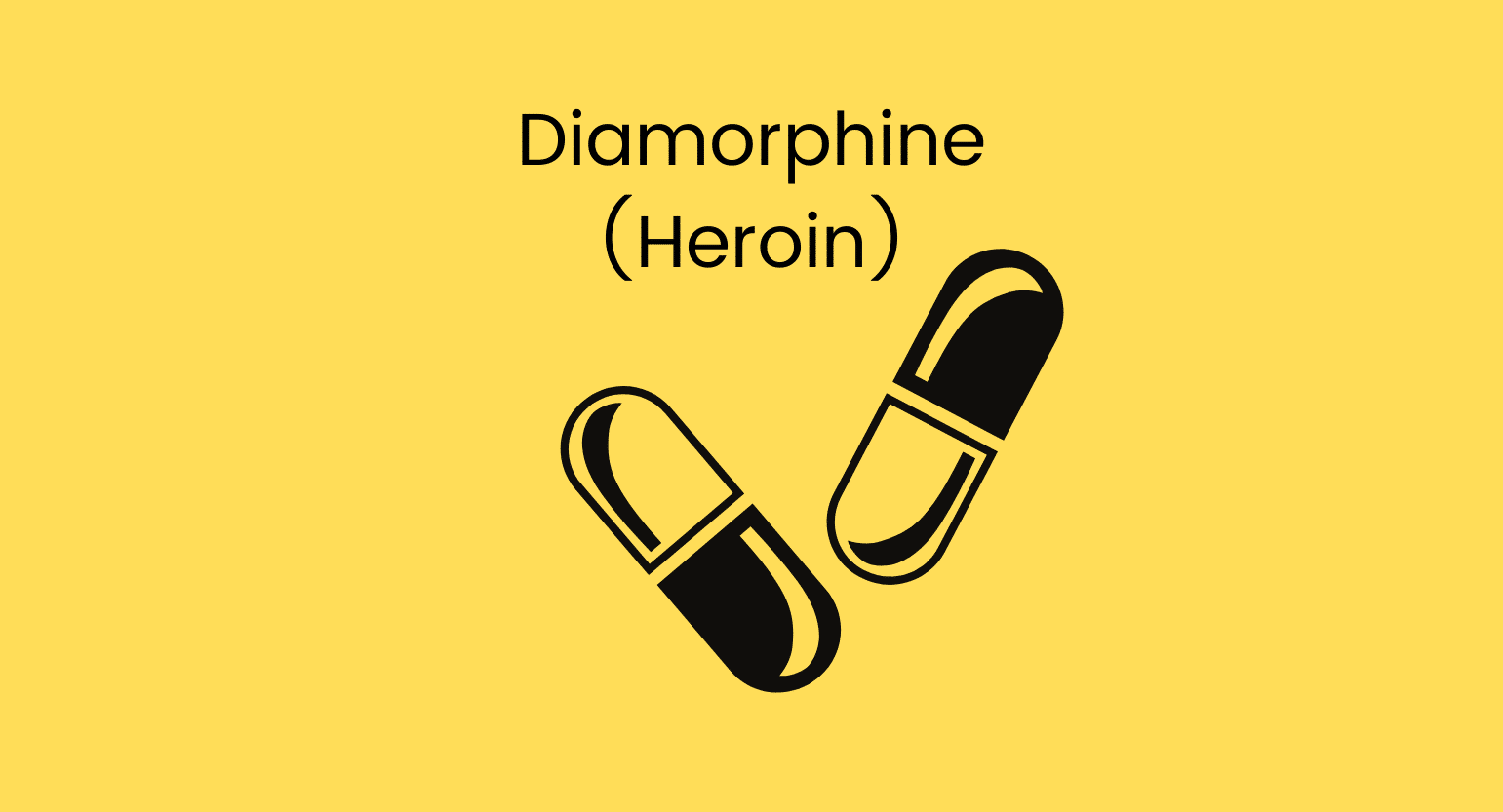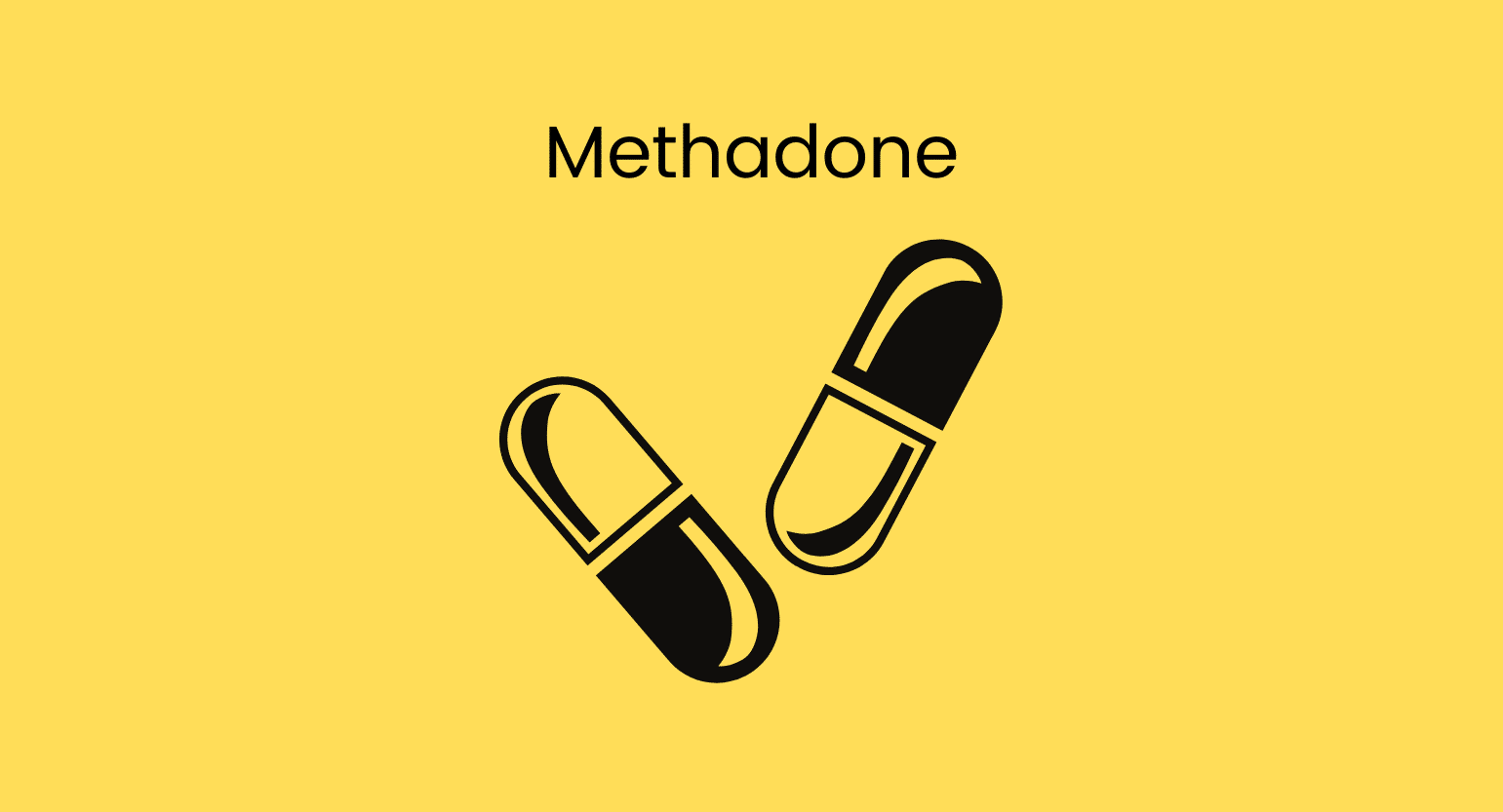Does Kratom Interact With Hydroxyzine (Vistaril)?
Yes, kratom and hydroxyzine can interact in the body in two main ways. The risks of this interaction are considered moderate.
Mixing these two substances increases the risk of side effects, including sedation. One of the reasons behind this is that this combination impairs both drugs’ metabolism, causing a buildup and making the drugs remain longer in the blood than they should. The other is that the overall sedative effects can potentiate from this combination, making it dangerous.
Even if the interaction is moderate, it may differ from person to person, especially if the two drugs are taken long-term and in large quantities.
Always take advice from your doctor before taking kratom with hydroxyzine.
Let’s look closer at kratom’s interactions with hydroxyzine:
Kratom Enhances the Effects of Hydroxyzine (Agonistic Interaction)
When two drugs with similar effects are taken together, the overall effect might potentiate. This is called pharmacologic agonism. This can increase the potency of the treatment, which is not always beneficial.
Although the mechanisms of action of kratom and hydroxyzine are very different, both substances can cause sleepiness and lethargy. The active ingredient of kratom stimulates opioid receptors, whereas hydroxyzine acts by blocking the histamine (namely H1) receptors.
Taken together, they may cause severe lethargy, somnolence, and depression of vital centers in the brain.
This interaction can have serious adverse effects like brain fog (confusion), morbid drowsiness, and sedation.
Kratom May Slow Down Hydroxyzine’s Metabolism (Metabolic Competition)
When two substances that require the same enzymes for their breakdown are taken together, they may compete for such enzymes. The result is a hindered metabolism of one or both substances and a prolongation of the duration of effects. This phenomenon is known as metabolic competition.
Kratom and hydroxyzine are metabolized by the same liver enzyme, CYP3A4 [1, 2].
Therefore, when consumed simultaneously, they can compete for this enzyme, which slows their metabolism and elimination and leads to overaccumulation of both drugs within the body.
Such metabolic competition can increase the risk of adverse effects and toxicity. This may be prevented or controlled by taking the two drugs at different times or lowering the dosage.

Kratom & Hydroxyzine Interactions
Hydroxyzine is a first-generation antihistamine commonly used to treat urticaria and other allergy symptoms. Combining other antihistamines with kratom can cause similar interactions.
Other antihistamines that kratom may interact with are:
- Diphenhydramine (Benadryl)
- Chlorpheniramine
- Pheniramine
- Cetirizine (Zyrtec)
- Cyclizine
Is It Safe To Take Kratom With Hydroxyzine (Vistaril)?
The interaction between kratom and hydroxyzine is considered moderate to severe and will depend on the dose you take. Taking them together for long durations or in high doses is not recommended.
Combining high doses of these drugs can be lethal. This is because they can result in excessive sedation and depress vital centers in the brain. Also, several unwanted adverse effects may occur due to slowed elimination of both drugs.
If you must take them together, do so only after consulting your doctor. Never start them on your own.
What Is Hydroxyzine (Vistaril)?
Hydroxyzine is a piperazine derivative and is classified as a first-generation antihistamine. It was first patented in 1956 and was approved for sale by Pfizer later in the same year.
Histamine is an organic substance that triggers inflammation and allergy symptoms in the body. It also has other vital roles, like the neuroregulation of the sleep-wake cycle [3].
This is why antihistamines often cause sedation; they work on multiple targets in the body and are used to treat anxiety, sleeping difficulties, allergies, nausea, and vomiting.
Hydroxyzine Specifications
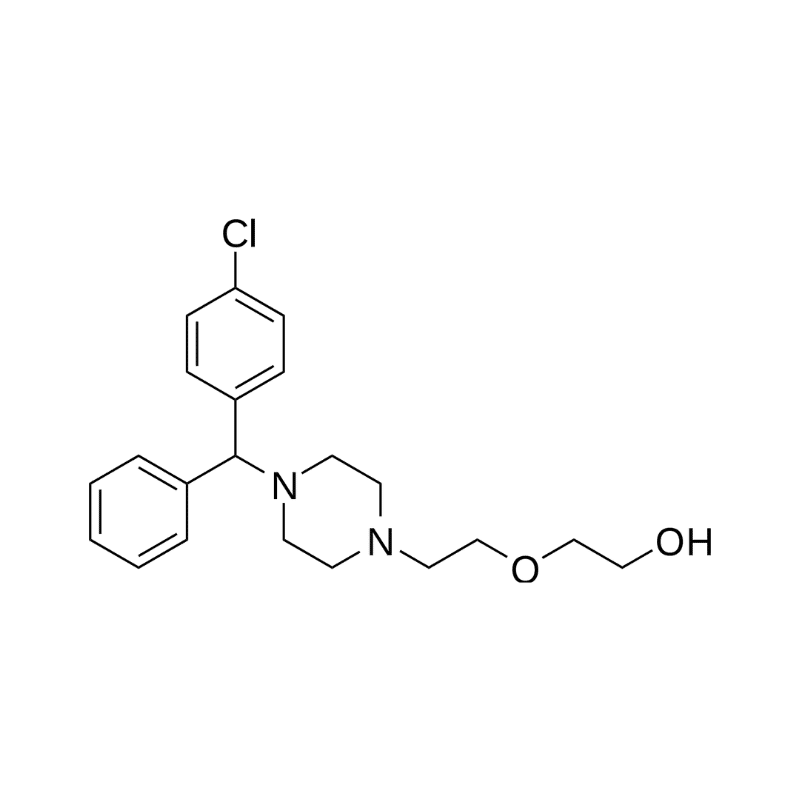
| Drug Name | Hydroxyzine |
| Trade Name | Vistaril, Atarax, NOVO-Hydroxyzin, PMS-Hydroxyzine HCL, PMS-Hydroxyzin |
| Classification | First-generation antihistamine |
| CYP Metabolism | CYP3A4 |
| Interaction With Kratom | Agonistic and metabolic competition |
| Risk of Interaction | Moderate to severe |
What Is Hydroxyzine Used for?
Hydroxyzine, a first-generation antihistamine, has several clinical uses. Some of them are:
Anxiety
Current research has shown hydroxyzine to relieve anxiety symptoms [4]. The dose used for anxiety relief is 50 to 100 mg every 4 to 6 hours.
Pain Management After Delivery
Hydroxyzine is used as an adjunct to reduce the dose of opioids for pain management after delivery [5]. The amount used for pain management is 50 to 100 mg every 4 to 6 hours.
Allergy Symptoms
It also manages allergy symptoms [6]. It prevents mast cells in the skin from releasing histamine. Histamine is a mediator of allergic reactions such as hives. The recommended dose of hydroxyzine is 25 mg every 6 to 8 hours to treat allergies.
Sedation Before Major Surgery
Histamine is a major factor regulating the waking phase of the sleep-wake cycle. Thus, antihistamines like hydroxyzine can help sedate the patient before surgery.
Nausea & Vomiting
Hydroxyzine can help manage nausea and vomiting by suppressing the vomiting center in the brain. The drug dose for nausea and vomiting is 25 mg, given intramuscularly.
Difficulty Sleeping
Hydroxyzine has some effect on serotonin —a neurotransmitter thought to regulate sleep. So, it may help people with sleeping difficulties.
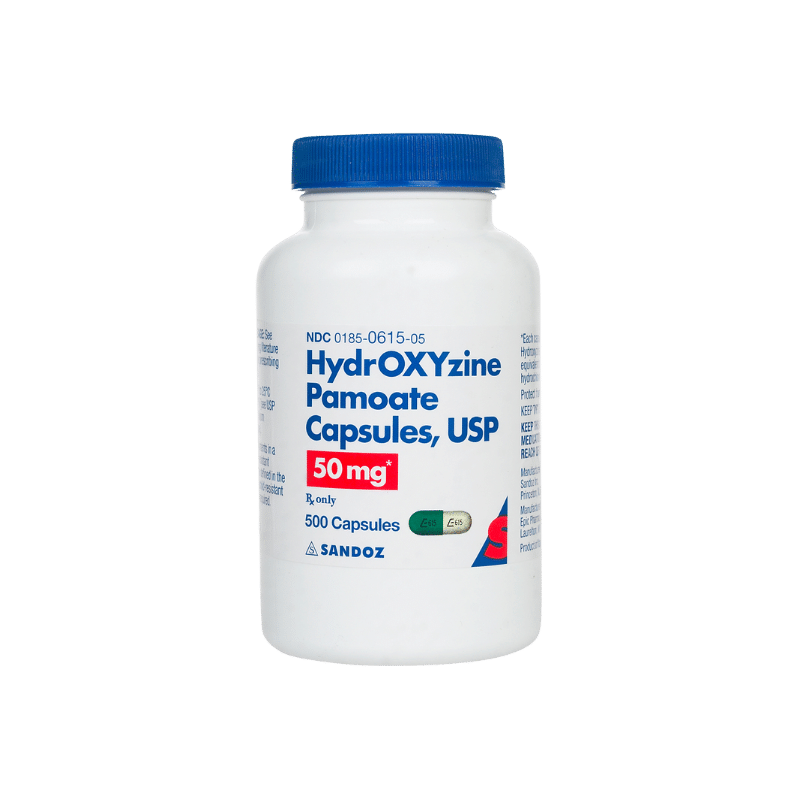
What Are the Side Effects of Hydroxyzine?
With clinical doses of hydroxyzine, serious side effects are rare.
Some side effects of hydroxyzine are:
- Convulsions (seizures)
- Dizziness
- Drowsiness
- Dry mouth
- Headache
- Heart palpitations
- Hives, itching, or skin rash
- Sedation
- Tremors
What is Kratom?
Kratom, or Mitragyna speciosa, is a tropical plant indigenous to Southeast Asia and a member of the coffee family with unique pharmacological properties [7]. The active alkaloids of kratom responsible for its health benefits are mitragynine and 7-hydroxymitragynine.
7-hydroxymitragynine is more potent than mitragynine, though it’s not as abundant [8]. Kratom is commonly consumed by preparing the leaves into tea or grinding them into a powder.
Recent evidence has revealed that kratom has physiological effects similar to opioids, including pain relief and euphoria [9]. It has scores of health benefits depending on strain and dose. It has prevented burnout among Asian laborers since the early 19th century.
Kratom is a stimulant in low doses but a sedative in high doses.
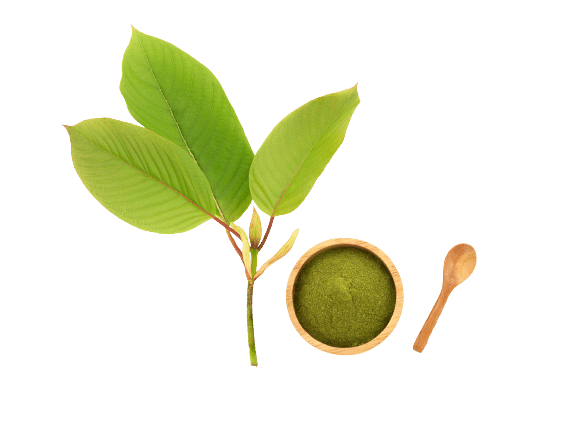
What Is Kratom Used For?
Kratom has many uses and indications, but these are the most common:
- Anxiety
- Depression
- Fatigue
- Opiate withdrawal
- Pain
- Stress disorders
- Insomnia
What is the Proper Dose of Kratom?
You need to consider a few things to figure out the right dose. What are you using kratom for? What’s your tolerance level?
Kratom doses vary a lot, but here are the general guidelines.
- Small doses: 2-5 g
- Medium doses: 5-8 g
- Larger doses: 8-12 g
Remember, smaller amounts are more energizing, while more significant amounts are better for sleep and pain relief.
For a more detailed guide, use our kratom dose calculator.
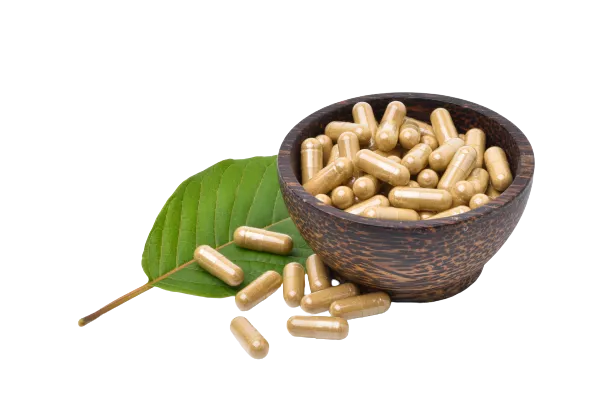
What Are the Side Effects of Kratom?
Kratom is well-tolerated as long as it’s used responsibly. While there are some side effects, these are most common with large amounts and long-term use. In general, kratom is low-risk, and its side effects disappear quickly.
Nausea & Vomiting
Nausea almost always signifies that you have taken more kratom than your body can handle [10]. Making kratom tea with ginger is a great way to soothe nausea.
Constipation
Constipation may occur due to the stimulation of opioid receptors [10]. Staying hydrated can help you avoid constipation. Also, you can take fiber-rich food to avoid this unwanted effect.
Lethargy & Sedation
Kratom is generally stimulating at first. This stimulation tends to fade off into a gentle relaxation later on. Once you continue to use kratom daily, these effects will start to change. The initial energetic rush will become shorter and less pronounced.
If you continue to use kratom after its beneficial effects wane, you may develop chronic fatigue as your dopamine and adrenaline systems burn out [10]. To avoid lethargy, you should reduce the dose and frequency of taking kratom.
Lightheadedness & Dizziness
Lightheadedness and dizziness can result from high kratom doses. Dizziness occurs due to a drop in blood pressure or dehydration [11]. To avoid dizziness, you should lie down and avoid sudden movements.
Confusion
Brain fog or confusion may result from inappropriately high doses. To avoid confusion, you must stay hydrated, have a balanced diet, and stick to smaller doses of kratom.
Anxiety
Kratom is used to treat anxiety, but if you use a lot of it every day, kratom may cause anxiety. To avoid this, make sure you take a small dose and reduce the frequency of intake.

What Are the Different Types of Kratom?
Depending on the color of the vein of the kratom leaf, it has been classified into four types:
White Vein Kratom
White strains are best for those seeking heightened energy, focus, and concentration, as it possesses energy-boosting properties.
Red Vein Kratom
Red strains of kratom are best for sleep and pain. They are powerful and fast-acting with numbing and relaxing effects.
Green Vein Kratom
Green vein kratom is a balance between white and red types of kratom. It has both stimulant and sedative effects which depend on the dose taken.
Yellow Vein Kratom
Yellow vein kratom can come from fermented green vein kratom and is smoother with more relaxing properties.

Key Takeaways
Kratom and hydroxyzine work via different mechanisms, but both can cause sedation. When taken together, their agonistic interaction can cause an increased risk of side effects, including a dangerous slowing of brain activity.
It is best not to take them together as it may result in life-threatening events such as depression of vital brain centers.
If you take hydroxyzine and want to take kratom, or vice versa, consult a doctor first.
- Kamble, S. H., Sharma, A., King, T. I., León, F., McCurdy, C. R., & Avery, B. A. (2019). Metabolite profiling and identification of enzymes responsible for the metabolism of mitragynine, the major alkaloid of Mitragyna speciosa (kratom). Xenobiotica, 49(11), 1279-1288.
-
National Center for Biotechnology Information (2022). PubChem Compound Summary for CID 3658, Hydroxyzine. Retrieved October 28, 2022 from https://pubchem.ncbi.nlm.nih.gov/compound/Hydroxyzine.
- Barbier, A. J., & Bradbury, M. J. (2007). Histaminergic control of sleep-wake cycles: recent therapeutic advances for sleep and wake disorders. CNS & Neurological Disorders-Drug Targets (Formerly Current Drug Targets-CNS & Neurological Disorders), 6(1), 31-43.
- Ferreri, M., & Hantouche, E. G. (1998). Recent clinical trials of hydroxyzine in generalized anxiety disorder. Acta Psychiatrica Scandinavica, 98, 102-108.
- Inmon, W. B. (1963). A study of the effect of hydroxyzine hydrochloride on labor and delivery. American Journal of Obstetrics and Gynecology, 86(7), 853–855.
- Estelle, F., Simons, R., & Simons, K. J. (2002). Clinical pharmacology of H1-antihistamines. Histamine and H1-Antihistamines in Allergic Disease: Second Edition Revised and Expanded, 141–178.
- Ramanathan, S., León, F., Chear, N. J., Yusof, S. R., Murugaiyah, V., McMahon, L. R., & McCurdy, C. R. (2021). Kratom (Mitragyna speciosa Korth.): A description on the ethnobotany, alkaloid chemistry, and neuropharmacology. Studies in Natural Products Chemistry, 69, 195-225.
- Kruegel, A. C., Uprety, R., Grinnell, S. G., Langreck, C., Pekarskaya, E. A., le Rouzic, V., Ansonoff, M., Gassaway, M. M., Pintar, J. E., Pasternak, G. W., Javitch, J. A., Majumdar, S., & Sames, D. (2019). 7-Hydroxymitragynine Is an Active Metabolite of Mitragynine and a Key Mediator of Its Analgesic Effects. ACS Central Science, 5(6), 992–1001.
- Swogger, M. T., & Walsh, Z. (2018). Kratom use and mental health: A systematic review. Drug and Alcohol Dependence, 183, 134–140.
- Warner, M. L., Kaufman, N. C., & Grundmann, O. (2015). The pharmacology and toxicology of kratom: from traditional herb to drug of abuse. International Journal of Legal Medicine 2015 130:1, 130(1), 127–138.
- Wahbeh, A., Nasralah, T., El-Gayar, O., Al-Ramahi, M., & Noshokaty, A. el. (2021). Adverse Health Effects of Kratom: An Analysis of Social Media Data. Computer Information Systems Faculty Publications.

